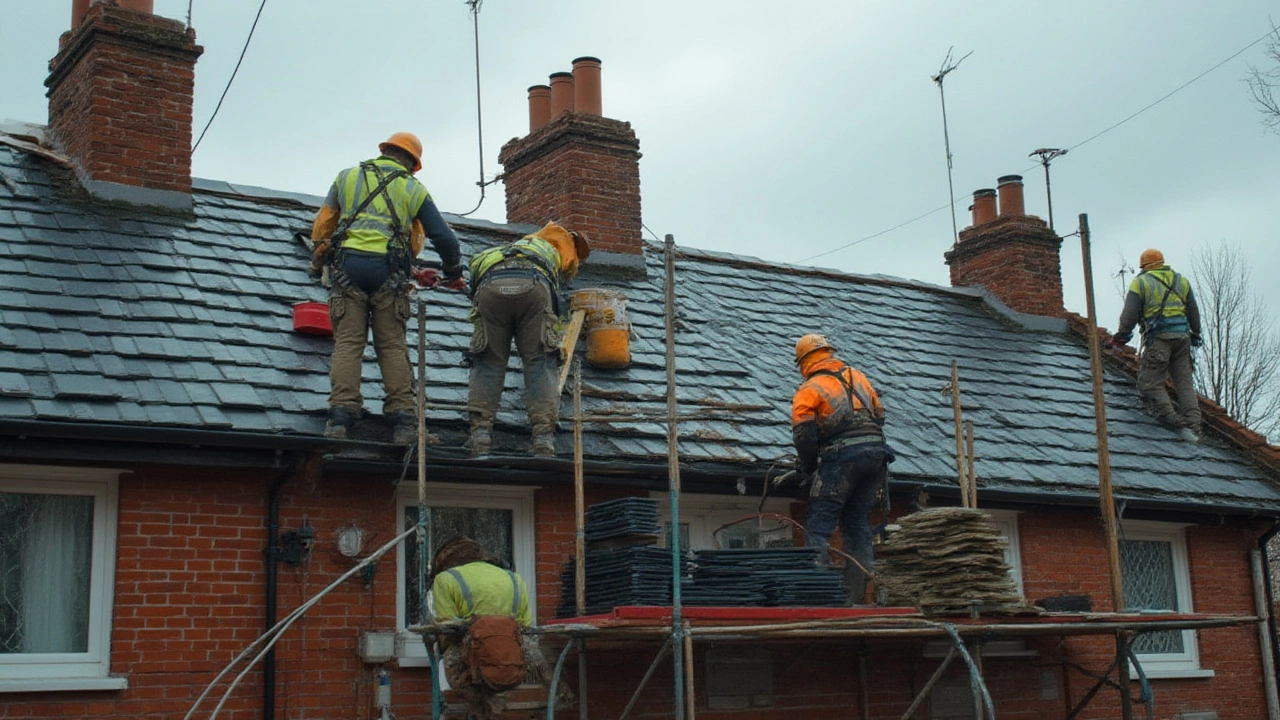Roof Replacement: What You Need to Know Before You Start
Thinking about a new roof? It feels like a big job, but breaking it down makes it manageable. In this guide we’ll cover the warning signs, the price drivers, and the steps to find a trustworthy roofer – all without the jargon.
When to Replace Your Roof
First, ask yourself if the roof really needs a full replacement or just a repair. Look for these tell‑tale signs:
- Missing or cracked shingles that expose the underlayment.
- Granules from shingles showing up in gutters – that’s a sign they’re wearing thin.
- Water stains on the ceiling or walls, especially after a rainstorm.
- Roof age: most asphalt shingle roofs last 20‑25 years. If yours is older, replacement becomes more likely.
- Visible sagging or a noticeable dip in the roofline.
If you spot two or more of these, call a roofer for an inspection. A professional can tell you whether a patch will do or if a full tear‑off makes sense.
Choosing the Right Roofing Contractor
Picking a roofer is where most homeowners feel unsure. Here’s a quick checklist that saves you trouble:
- Verify their licence and insurance – you don’t want a surprise bill if something goes wrong.
- Ask for three written quotes. A big price gap usually means a difference in materials or labour quality.
- Check reviews and ask for recent references. A good roofer should have happy customers willing to talk.
- Make sure the quote includes a timeline, clean‑up plan and warranty details.
- Confirm they will pull the necessary building permits. Skipping permits can cause headaches later.
When you meet the contractor, trust your gut. Do they listen to your concerns? Do they explain things in plain language? Those are good signs they’ll keep you in the loop throughout the project.
Now, let’s talk cost. A roof replacement in the UK typically ranges from £5,000 to £15,000, depending on size, pitch and material. Asphalt shingles are the most affordable, while slate, tile or copper push the price higher. Don’t forget extra costs like flashing, ventilation upgrades and disposal of the old roof.
Once you’ve signed a contract, the work usually follows these steps:
- Preparation: The roofer secures the site, sets up safety barriers and orders the right amount of material.
- Removal: Old roofing is stripped away, and the deck is inspected for damage.
- Repairs: Any rotten decking or broken nails are fixed before the new layers go on.
- Installation: New underlayment is laid, followed by the chosen roofing material, starting at the bottom and working up.
- Finishing touches: Flashing around chimneys, vents and valleys is installed, then the roof is cleaned up.
After the job, ask the roofer for a maintenance plan. Simple steps like clearing gutters, trimming overhanging trees and scheduling a yearly inspection keep your roof happy for years.
Bottom line: a roof replacement isn’t a mystery if you know the signs, understand the cost factors and follow a solid contractor checklist. With the right preparation, you’ll protect your home, boost curb appeal and avoid costly leaks down the road.

